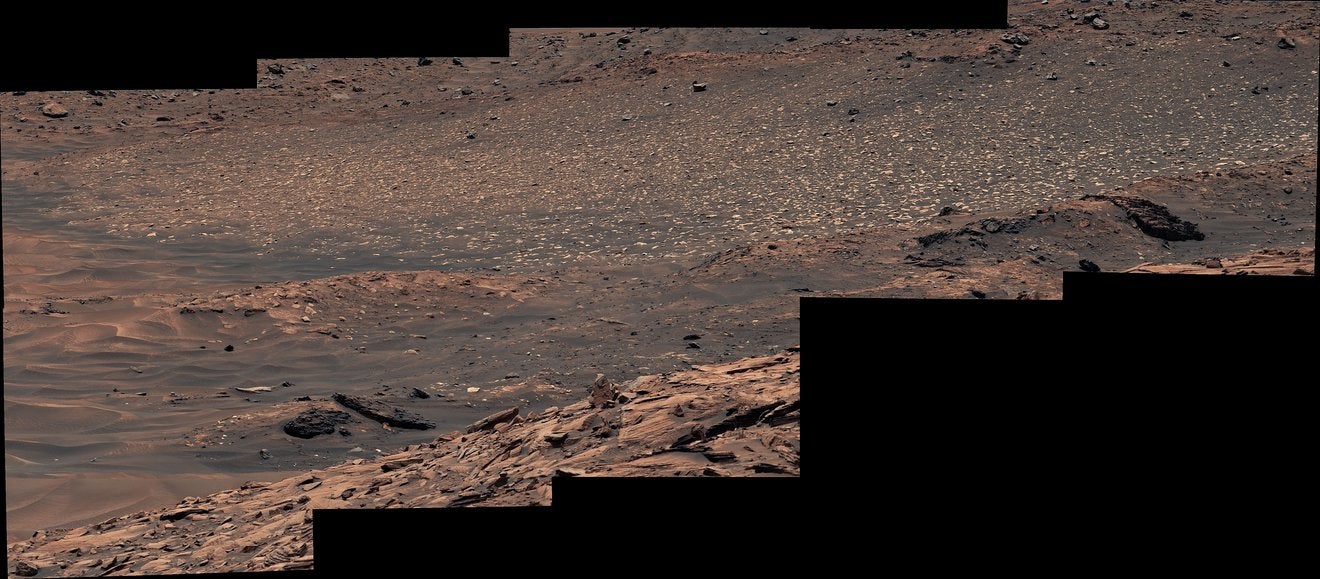Your support helps us to tell the story
From reproductive rights to climate change to Big Tech, The Independent is on the ground when the story is developing. Whether it’s investigating the financials of Elon Musk’s pro-Trump PAC or producing our latest documentary, ‘The A Word’, which shines a light on the American women fighting for reproductive rights, we know how important it is to parse out the facts from the messaging.
At such a critical moment in US history, we need reporters on the ground. Your donation allows us to keep sending journalists to speak to both sides of the story.
The Independent is trusted by Americans across the entire political spectrum. And unlike many other quality news outlets, we choose not to lock Americans out of our reporting and analysis with paywalls. We believe quality journalism should be available to everyone, paid for by those who can afford it.
Your support makes all the difference.
While on the hunt for signs of ancient microbial life on Mars, NASA’s Curiosity rover captured a mysterious field of white sulfur stones in a series of striking new images.
Curosity – which left Earth on its missing 13 years ago – first discovered the striking scene over the summer in the Red Planet’s Gediz Vallis channel.
“We looked at the sulfur field from every angle — from the top and the side — and looked for anything mixed with the sulfur that might give us clues as to how it formed,” Curiosity’s project scientist Ashwin Vasavada said in a statement. “We’ve gathered a ton of data, and now we have a fun puzzle to solve,”

The rover used its Mastcam instrument to capture the area on the 4,352 Martian day of the pioneering mission.
Images of the area from NASA’s Mars Reconnaissance Orbiter had shown light-colored terrain but, the stones were too small for the spacecraft to see. The Curiosity team was therefore surprised by the stones and the yellow crystals they contained when the rover passed over them.
Investigations confirmed the stone was pure sulfur — something no mission has seen before on Mars. How the sulfur formed in the region remains unknown.
The stones were snapped alongside features from inside the channel, before the rover drove up to its western edge at the end of September.

NASA scientists are hoping to find out how the channel formed so late during a transition to a drier climate on the Red Planet. They’re also looking for evidence that ancient Mars once supported microbial life billions of years ago when the planet had lakes and rivers.
The features of the valley, located in the foothills of the three-mile-tall Mount Sharp, suggest that water moved through the area as the climate was changing. However, experts are still working to understand what formed parts of the channel, including the Pinnacle Ridge debris mound. The mound was captured in the rover’s new panorama and NASA is putting together a timeline of events.
After taking a few more panoramic images, the rover will leave the channel, journeying for a month to a crystalline formation called the boxwork, a set of weblike patterns that stretches for miles of the planet’s surface.

The boxwork is believed to have formed when minerals from Mount Sharp’s last pulses of water settled into fractures in surface rock and hardened. As that rock eroded, the minerals in the fractures left the patterns. Such formations have been seen on cliffsides and in caves on Earth. But, Mount Sharps boxwork structures are extensive and formed as water was disappearing.
“These ridges will include minerals that crystallized underground, where it would have been warmer, with salty liquid water flowing through,” Kirsten Siebach, a Curiosity scientist studying the region, explained. “Early Earth microbes could have survived in a similar environment. That makes this an exciting place to explore.”





